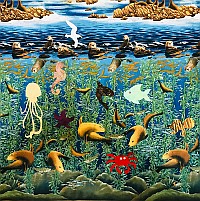Octopus Garden
Ringo Starr said he named his song after the story that Octopuses strolled along the ocean floor gathering rocks and other pretty baubles to make a garden. Is the story true? Indeed it is! Octopuses like to hide in small, protected areas. Sometimes they hide the opening to that area by piling up rocks, shells,…
